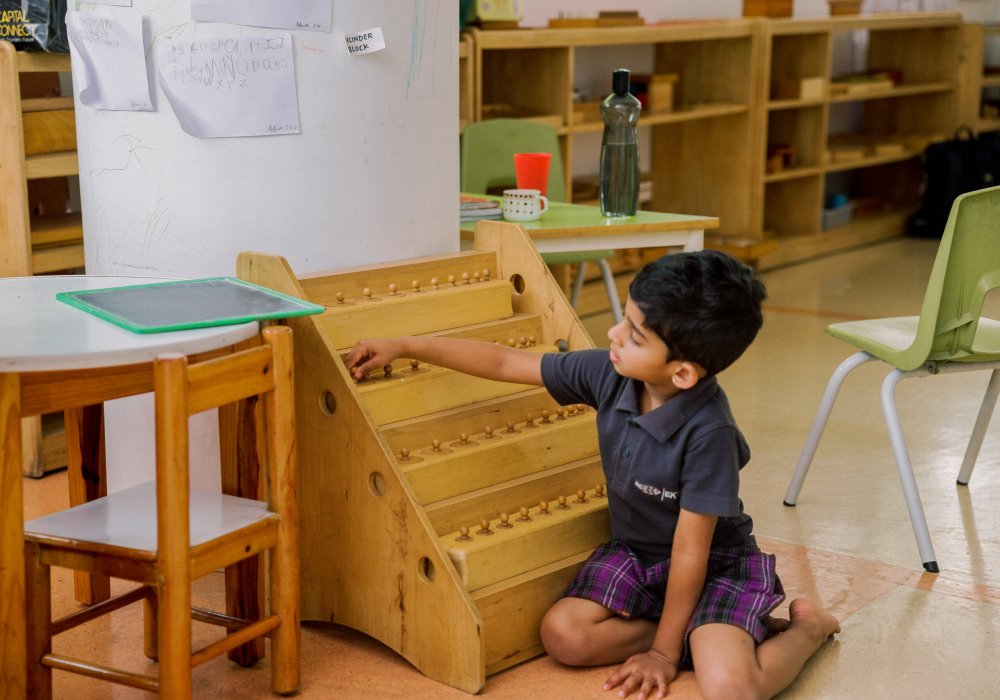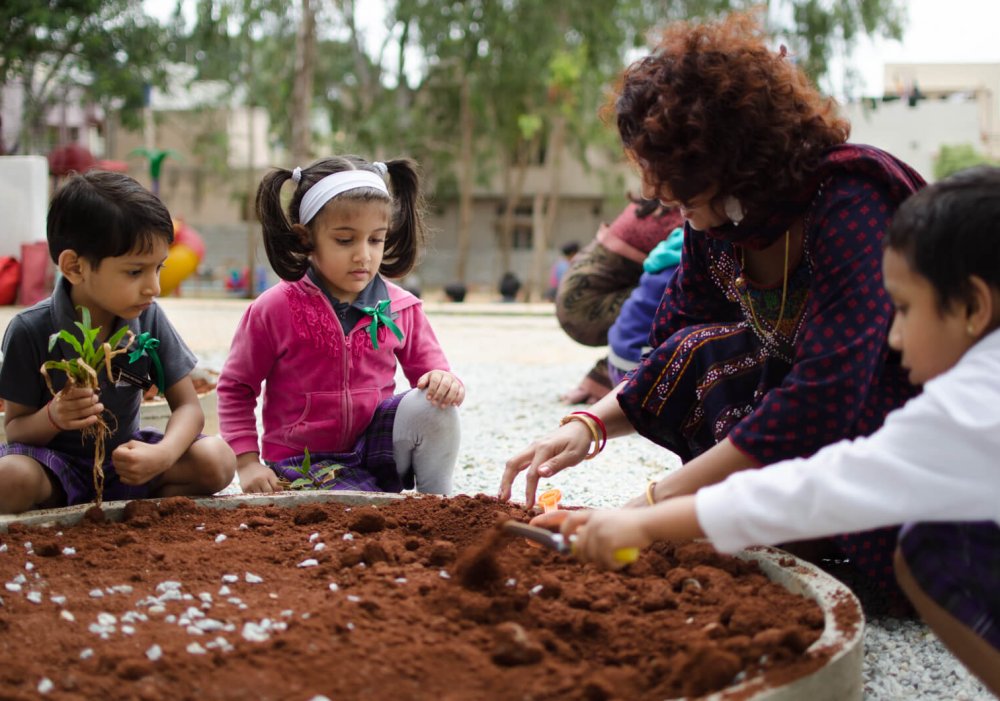Montessori Infrastructure
The Montessori Early Years environment is designed to provide a nurturing and enriching space for children aged 2.5 to 6 years. The infrastructure and design of the environment are crucial in supporting the Montessori principles and facilitating independent learning. The Montessori Early Years classroom is a carefully prepared environment that supports the child’s natural development and learning. The environment is designed to be:

Uncluttered and Well-Maintained
The classroom is simplified and uncluttered, with a sense of harmony and tranquillity. This creates a peaceful atmosphere that invites the child to engage in learning.

Organised and Accessible
Materials are organised on open shelves, easily accessible to the children. The classroom includes child-sized furniture, low sinks, cosy spaces for quiet reading, and child-sized kitchen utensils.

Aesthetically Pleasing
The environment is designed to be aesthetically pleasing, with warm lighting, pastel colours, and soft materials. This creates a sense of comfort and beauty that supports the child’s learning.
Freedom and Structure
The Montessori Early Years environment balances freedom and structure. Children have freedom of movement, freedom to explore, and freedom to interact socially. At the same time, the environment provides a clear structure and order that supports the child’s learning.

Freedom of Movement
Children are free to move around the classroom, choosing their activities and working at their own pace.

Uninterrupted Work Cycles
Children are given uninterrupted blocks of work time (typically 2+ hours) to fully immerse themselves in an activity without interruption.

Organised Materials
Materials are organised on shelves in a logical sequence, from simple to complex, concrete to abstract. This structure supports the child’s learning and development.
Natural Materials and Real Experiences
The Montessori Early Years environment emphasises the use of natural materials and real objects. This helps children develop a sense of reality and a connection to the natural world.

Natural Materials
The classroom uses natural materials such as wood, reeds, bamboo, metal, cotton, and glass instead of synthetic or plastic materials.

Child-Sized Real Objects
Furniture and tools are child-sized, allowing children to use them independently. This includes rakes, hoes, pitchers, tongs, and shovels that fit children’s hands and height.

Interaction With Nature
Children are encouraged to interact with the natural environment outside the classroom, experiencing and interpreting natural phenomena.
Social Environment
The Montessori Early Years environment is designed to support social interaction and collaboration. The multi-age classroom structure allows older children to model more advanced behaviours for younger children.

Collaborative Learning
Children have the freedom to interact with each other through work, rest, and play. They are encouraged to approach each other with empathy and work constructively through disagreements.

Sense of Community
The environment fosters a sense of community responsibility, with children taking ownership of their learning and contributing to the maintenance of the classroom.